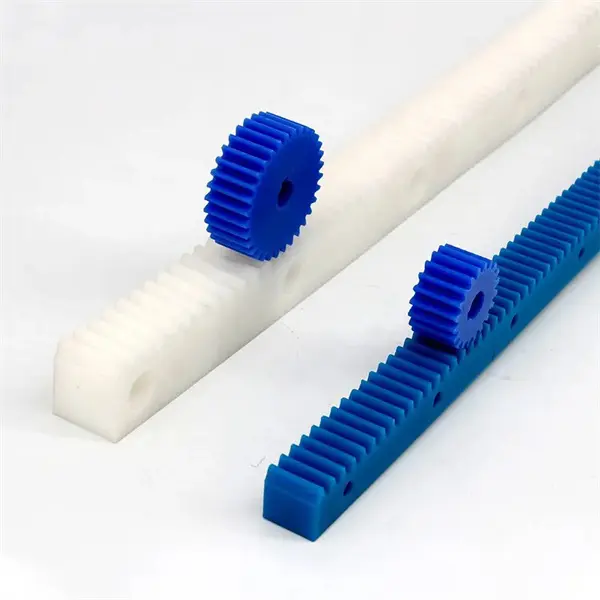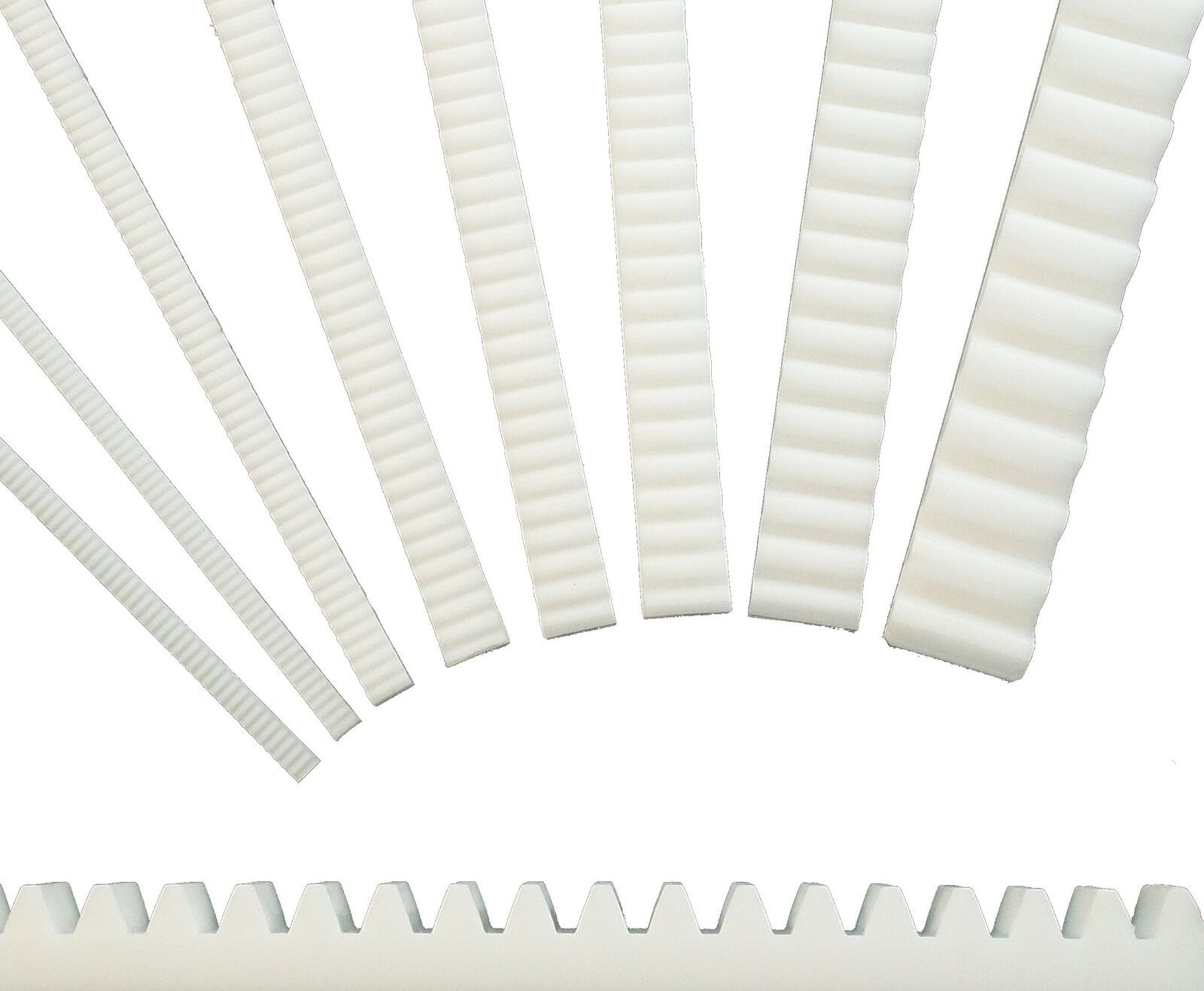Product Description
Product Description
Product name Engraving machine rack
brand longqiao
material C45 steel
color Silvery white, black
specifications 30 gear
scope of Engraving machine drive system
Product features High precision and high bearing strength
shape rack
Chief 670mm, 960mm,1400mm
After Warranty Service Online support
| Product name | Engraving machine rack |
| brand | longqiao |
| material | C45 steel |
| color | Silvery white, black |
| specifications | 30 gear |
| scope of | Engraving machine drive system |
| Product Name: | Engraving Machine Rack |
|---|---|
| Brand: | Longqiao |
| Material: | C45 Steel |
| Color: | Silvery White, Black |
| Specifications: | 30 Gear |
| Scope of: | Engraving Machine Drive System |

How do rack and pinion systems handle different gear ratios?
Rack and pinion systems can accommodate different gear ratios by adjusting the size and number of teeth on the gears. The gear ratio determines the relationship between the rotational motion of the pinion gear and the linear motion of the rack. Here’s a detailed explanation of how rack and pinion systems handle different gear ratios:
In a rack and pinion system, the pinion gear is a small gear with teeth that meshes with the rack, which is a long, straight bar with teeth along its length. As the pinion gear rotates, it translates rotational motion into linear motion along the rack. The gear ratio is defined as the ratio of the number of teeth on the pinion gear to the number of teeth on the rack. It determines how much linear motion the rack will produce for each revolution of the pinion gear.
To handle different gear ratios, the following approaches can be taken:
- Varying the Number of Teeth: By changing the number of teeth on the pinion gear and the rack, different gear ratios can be achieved. Increasing the number of teeth on the pinion gear relative to the rack will result in a higher gear ratio, providing more linear motion per revolution of the pinion gear. Conversely, reducing the number of teeth on the pinion gear relative to the rack will yield a lower gear ratio, producing less linear motion per revolution of the pinion gear.
- Modifying the Module and Pitch: The module and pitch of the gear teeth can also be adjusted to accommodate different gear ratios. The module refers to the size of the teeth, while the pitch determines the spacing between the teeth. Changing the module and pitch can alter the gear ratio without significantly affecting the overall dimensions of the rack and pinion system. This approach allows for more flexibility in achieving specific gear ratios while maintaining compatibility with existing system components.
- Using Gear Reduction or Multi-Stage Systems: In certain applications where a wide range of gear ratios is required, gear reduction or multi-stage systems can be employed. Gear reduction involves incorporating additional gears between the pinion and the rack to achieve the desired gear ratio. Each additional gear stage introduces its own gear ratio, allowing for more precise control over the system’s overall gear ratio. This approach is commonly used in applications that require high precision or a wide range of motion control options.
The selection of a specific gear ratio depends on the application requirements, such as the desired linear speed, torque, or positional accuracy. The gear ratio determines the system’s speed and force transmission characteristics, as well as its ability to handle different loads. It is important to note that changing the gear ratio can affect other system parameters, such as backlash, efficiency, and system dynamics. Therefore, careful consideration and analysis of the application’s needs and trade-offs are necessary when selecting and adjusting the gear ratio in a rack and pinion system.

Can rack and pinion systems be applied in both mobile and stationary machinery?
Yes, rack and pinion systems can be applied in both mobile and stationary machinery. The versatility and adaptability of rack and pinion mechanisms make them suitable for a wide range of applications, regardless of whether the machinery is mobile or stationary. Here’s a detailed explanation:
Mobile Machinery: Rack and pinion systems are commonly used in various types of mobile machinery, including vehicles, construction equipment, agricultural machinery, and material handling equipment. Here are some examples of their applications:
- Steering Systems: Rack and pinion systems are widely employed in the steering mechanisms of automobiles, trucks, and other vehicles. The rotational motion of the steering wheel is converted into linear motion by the rack and pinion system, allowing for precise control over the direction of the vehicle.
- Lifting and Positioning: Mobile machinery often requires lifting and positioning capabilities. Rack and pinion systems can be utilized in hydraulic lifting systems or linear actuator mechanisms to provide controlled linear motion for raising or lowering loads, adjusting equipment height, or extending and retracting components.
- Sliding Doors and Gates: Rack and pinion systems can be employed in mobile machinery, such as buses, trains, or elevators, to operate sliding doors or gates. The linear motion of the rack and pinion mechanism facilitates smooth and reliable opening and closing of the doors or gates.
Stationary Machinery: Rack and pinion systems are also extensively used in stationary machinery across various industries. Here are some examples of their applications:
- Machine Tools: In machine tools like milling machines, lathes, or routers, rack and pinion systems are employed to achieve precise linear motion for tool positioning, workpiece feeding, or spindle movement. The accuracy and repeatability of the rack and pinion mechanism contribute to high-quality machining processes.
- Industrial Automation: Rack and pinion systems play a crucial role in industrial automation applications, such as robotic arms, pick-and-place systems, or assembly lines. They enable precise and controlled linear motion for manipulating objects, transferring components, or executing complex tasks with high accuracy.
- Conveyor Systems: Rack and pinion systems can be utilized in stationary conveyor systems to facilitate the movement of materials or products along a linear path. The rack and pinion mechanism provides reliable and precise motion control, ensuring efficient material handling and sorting operations.
The application of rack and pinion systems in both mobile and stationary machinery highlights their versatility and widespread use across different industries. The ability to convert rotational motion into linear motion or vice versa, combined with their precise motion control capabilities, makes rack and pinion mechanisms a popular choice in various machinery and equipment designs.

Can you explain the primary applications of rack and pinion systems?
Rack and pinion systems have a wide range of applications across various industries and sectors. These mechanisms are valued for their ability to convert rotational motion into linear motion with precision and efficiency. Here’s a detailed explanation of the primary applications of rack and pinion systems:
- Steering Systems: One of the most common applications of rack and pinion systems is in steering systems for automobiles and other vehicles. The rack and pinion mechanism allows for the controlled and precise movement of the vehicle’s wheels, enabling the driver to steer the vehicle smoothly and responsively.
- CNC Machines: Rack and pinion systems are widely used in computer numerical control (CNC) machines, such as CNC routers, plasma cutters, and laser cutters. They provide the linear motion necessary for the movement of the cutting tools or workpieces, allowing for precise machining and fabrication processes.
- Robotics: Rack and pinion systems find extensive use in robotics for various applications. They can be employed in robotic arms and manipulators to provide linear motion for lifting, extending, and positioning tasks. Rack and pinion mechanisms are also utilized in joint mechanisms and linear actuators in robotic systems.
- Elevators: Rack and pinion systems play a critical role in elevator systems. They enable the vertical movement of the elevator car by converting the rotational motion of the motor into linear motion along guide rails. Rack and pinion mechanisms ensure smooth and reliable operation, allowing for efficient transportation of people and goods between different floors.
- Industrial Machinery: Rack and pinion systems are employed in various industrial machinery applications. They are used in packaging machinery, material handling equipment, assembly line systems, and other industrial automation systems that require precise linear motion for conveying, positioning, or manipulating objects.
- Stage and Theater Equipment: In the entertainment industry, rack and pinion systems are utilized in stage and theater equipment. They are employed in moving platforms, scenery automation, and lifting mechanisms to facilitate smooth and controlled movement during performances and productions.
- Printing Industry: Rack and pinion systems are commonly found in printing machinery, such as digital printers and large-format plotters. They provide the necessary linear motion for the movement of print heads, ensuring accurate and high-quality printing results.
- Other Applications: Rack and pinion systems are also utilized in various other applications, including machine tools, construction equipment, agricultural machinery, medical devices, and more. Their versatility, reliability, and ability to provide precise linear motion make them suitable for a wide range of mechanical systems.
The primary applications of rack and pinion systems span across industries where precise linear motion is required for tasks such as steering, machining, positioning, lifting, and automation. The versatility and effectiveness of these mechanisms contribute to their widespread use in numerous fields.


editor by CX 2023-11-14